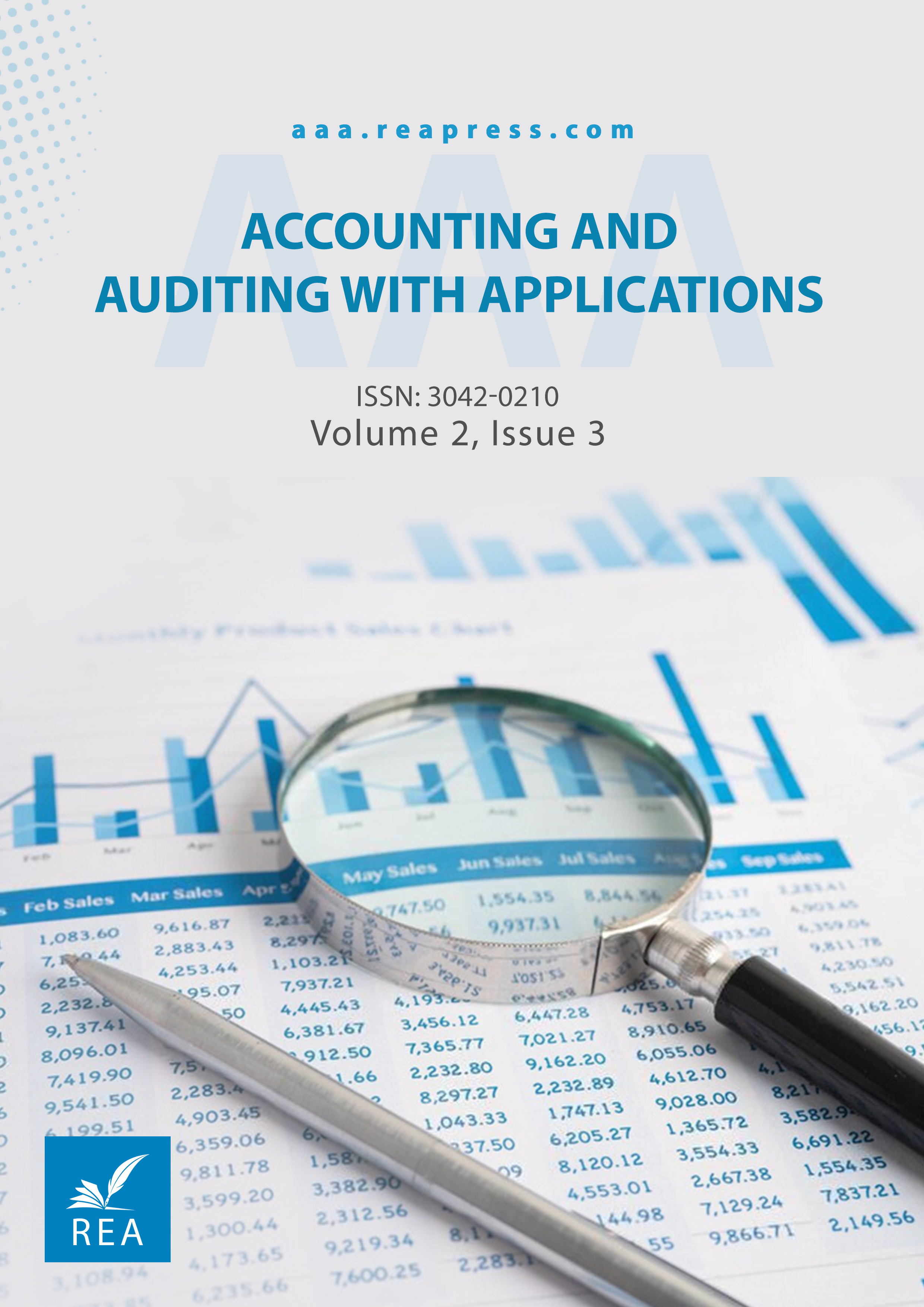Forecasting the Financial Bankruptcy of Iranian Listed Companies Using a Hybrid DEA–PCA Approach
Abstract
The topic of predicting company bankruptcy has attracted significant interest among financial researchers and experts. Due to the considerable impact of financial distress on companies' stakeholders, the development of accurate methods and models for forecasting bankruptcy and financial failure remains a key area of financial research. Investors consistently expect their capital to be secure and to receive returns that reflect the risks undertaken. Furthermore, the capacity to predict financial crises in companies in a timely manner in order to prevent capital loss is of critical importance. To address this need, researchers have conducted extensive studies employing various models and methods to evaluate corporate financial performance and forecast bankruptcy. However, it is essential to note that no single method is sufficient on its own; the best outcomes are achieved by combining multiple approaches with expert professional judgement. One technique that has gained increased attention in recent years for facilitating financial decision-making processes is Data Envelopment Analysis (DEA), which has produced acceptable predictive results. In this study, 52 manufacturing companies listed on the Tehran Stock Exchange were selected from three sectors: food and pharmaceuticals, metals, automotive and machinery, and chemicals and petrochemicals. Specifically, the first group included 21 companies (10 bankrupt and 11 healthy); the second group included 18 companies (10 bankrupt and eight healthy); and the third group included 13 companies (7 bankrupt and six healthy). The primary objective of this research is to evaluate the DEA model's ability to predict bankruptcy, i.e., to classify companies according to their financial distress status. To improve the performance of the DEA model, Principal Component Analysis (PCA) was used to reduce the dimensionality of its input variables.
Keywords:
Data envelopment analysis, Principal component analysis, Stock market, BankruptcyReferences
- [1] Altman, E. I. (1968). Financial ratios, discriminant analysis and the prediction of corporate bankruptcy. The journal of finance, 23(4), 589–609. https://doi.org/10.2307/2978933
- [2] Mehrani, S., Mehrani, K., Monsefi, Y., & Karami, G. (2005). An applied study of Zimsky and Shirata bankruptcy prediction models in companies listed on the Tehran Stock Exchange. Accounting and auditing reviews, 12(41), 105-131. (In Persian). https://dor.isc.ac/dor/20.1001.1.26458020.1384.12.3.4.5
- [3] Badiezadeh, T., & Farzipoor Saen, R. (2014). Efficiency evaluation of production lines using maximal balance index. International journal of management and decision making, 13(3), 302–317. https://doi.org/10.1504/IJMDM.2014.063573
- [4] Hua, Z., & Bian, Y. (2008). Performance measurement for network DEA with undesirable factors. International journal of management and decision making, 9(2), 141–153. https://doi.org/10.1504/IJMDM.2008.017196
- [5] Badiezadeh, T., Saen, R. F., & Samavati, T. (2018). Assessing sustainability of supply chains by double frontier network DEA: A big data approach. Computers & operations research, 98, 284–290. https://doi.org/10.1016/j.cor.2017.06.003
- [6] Najafi, S. E., Aryanezhad, M. B., Hosseinzadeh Lotfi, F., & Ebnerasoul, S. A. (2023). Performance evaluation accounting with inputs non-discretionary factors in an integrated BSC-DEA methodology. Big data and computing visions, 3(3), 111–124. (In Persian). https://doi.org/10.22105/bdcv.2023.190170
- [7] Akbarian, M., Najafi, E., Tavakkoli-Moghaddam, R., & Hosseinzadeh Lotfi, F. (2015). A network-based data envelope analysis model in a dynamic balanced score card. Mathematical problems in engineering, 2015(1), 914108. https://doi.org/10.1155/2015/914108
- [8] Rahmani, A., Rostamy-malkhalifeh, M., & Hosseinzadeh Lotfi, F. (2020). Evaluating performance of two-step networks using fuzzy data envelopment analysis. Revista gestão & tecnologia, 20, 96–105. https://doi.org/10.20397/2177-6652/2020.v20i0.1748
- [9] Fernandez-Castro, A., & Smith, P. (1994). Towards a general non-parametric model of corporate performance. Omega, 22(3), 237–249. https://doi.org/10.1016/0305-0483(94)90037-X
- [10] Staňková, M., & Hampel, D. (2023). Optimal threshold of data envelopment analysis in bankruptcy prediction. SORT-statistics and operations research transactions, 47(1), 129–150. https://doi.org/10.57645/20.8080.02.3
- [11] Gholaminezhad, A., Rostamy-malkhalifeh, M., Hosseinzadeh Lotfi, F., & Allahviranloo, T. (2025). Integrating of data envelopment analysis and discriminant analysis to predict the bankruptcy of firms: Application in electricity industry. Economic computation & economic cybernetics studies & research, 59(1), 22–37. 10.24818/18423264/59.1.25.02
- [12] Charnes, A., Cooper, W. W., & Rhodes, E. (1978). Measuring the efficiency of decision making units. European journal of operational research, 2(6), 429–444. https://doi.org/10.1016/0377-2217(78)90138-8
- [13] Cooper, W. W. (2001). Data envelopment analysis. In Encyclopedia of operations research and management science (pp. 183–191). Springer. https://doi.org/10.1007/1-4020-0611-X_212
- [14] Jenkins, L., & Anderson, M. (2003). A multivariate statistical approach to reducing the number of variables in data envelopment analysis. European journal of operational research, 147(1), 51–61. https://doi.org/10.1016/S0377-2217(02)00243-6
- [15] Mehregan, M. R. (2008). Quantitative models in organizational performance evaluation (DEA) data envelopment analysis" publications. Faculty of Management, University of Tehran. (In Persian). https://b2n.ir/rm3345
- [16] Adler, N., & Golany, B. (2002). Including principal component weights to improve discrimination in data envelopment analysis. Journal of the operational research society, 53(9), 985–991. https://doi.org/10.1057/palgrave.jors.2601400
- [17] Adler, N., & Golany, B. (2001). Evaluation of deregulated airline networks using data envelopment analysis combined with principal component analysis with an application to Western Europe. European journal of operational research, 132(2), 260–273. https://doi.org/10.1016/S0377-2217(00)00150-8
- [18] Cinca, C. S., & Molinero, C. M. (2004). Selecting DEA specifications and ranking units via PCA. Journal of the operational research society, 55(5), 521–528. https://doi.org/10.1057/palgrave.jors.2601705
- [19] Ho, C. T. B., & Wu, D. D. (2009). Online banking performance evaluation using data envelopment analysis and principal component analysis. Computers & operations research, 36(6), 1835–1842. https://doi.org/10.1016/j.cor.2008.05.008
- [20] Yazdi, H. D., Movahedi Sobhani, F., Lotfi, F. H., & Kazemipoor, H. (2023). A novel algorithm for complete ranking of DMUs dealing with negative data using data envelopment analysis and principal component analysis: Pharmaceutical companies and another practical example. Plos one, 18(9), e0290610. https://doi.org/10.1371/journal.pone.0290610
- [21] Sidhu, D. A., & Katoch, R. (2019). Bankruptcy prediction using Altman z-score model and data envelopment analysis model: A case of public listed realty sector companies in India. International journal of advanced science and technology, 28(13), 399–411. https://ssrn.com/abstract=3904529
- [22] Štefko, R., Horváthová, J., & Mokrišová, M. (2020). Bankruptcy prediction with the use of data envelopment analysis: An empirical study of Slovak businesses. Journal of risk and financial management, 13(9), 212. https://doi.org/10.3390/jrfm13090212
Downloads
Published
Issue
Section
License
Copyright (c) 2024 Accounting and Auditing with Applications

This work is licensed under a Creative Commons Attribution 4.0 International License.


